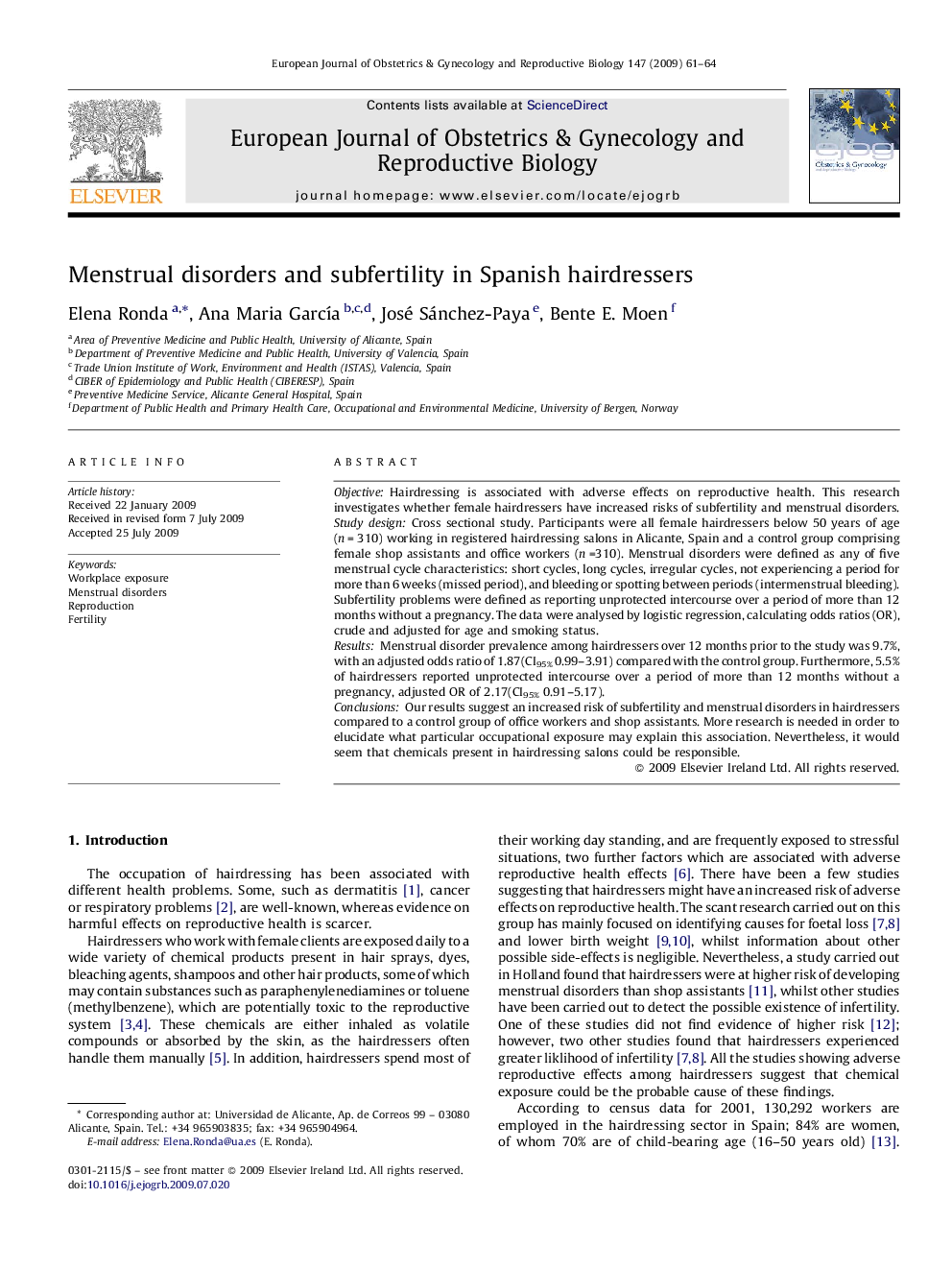| Article ID | Journal | Published Year | Pages | File Type |
|---|---|---|---|---|
| 3921456 | European Journal of Obstetrics & Gynecology and Reproductive Biology | 2009 | 4 Pages |
ObjectiveHairdressing is associated with adverse effects on reproductive health. This research investigates whether female hairdressers have increased risks of subfertility and menstrual disorders.Study designCross sectional study. Participants were all female hairdressers below 50 years of age (n = 310) working in registered hairdressing salons in Alicante, Spain and a control group comprising female shop assistants and office workers (n =310). Menstrual disorders were defined as any of five menstrual cycle characteristics: short cycles, long cycles, irregular cycles, not experiencing a period for more than 6 weeks (missed period), and bleeding or spotting between periods (intermenstrual bleeding). Subfertility problems were defined as reporting unprotected intercourse over a period of more than 12 months without a pregnancy. The data were analysed by logistic regression, calculating odds ratios (OR), crude and adjusted for age and smoking status.ResultsMenstrual disorder prevalence among hairdressers over 12 months prior to the study was 9.7%, with an adjusted odds ratio of 1.87(CI95% 0.99–3.91) compared with the control group. Furthermore, 5.5% of hairdressers reported unprotected intercourse over a period of more than 12 months without a pregnancy, adjusted OR of 2.17(CI95% 0.91–5.17).ConclusionsOur results suggest an increased risk of subfertility and menstrual disorders in hairdressers compared to a control group of office workers and shop assistants. More research is needed in order to elucidate what particular occupational exposure may explain this association. Nevertheless, it would seem that chemicals present in hairdressing salons could be responsible.
